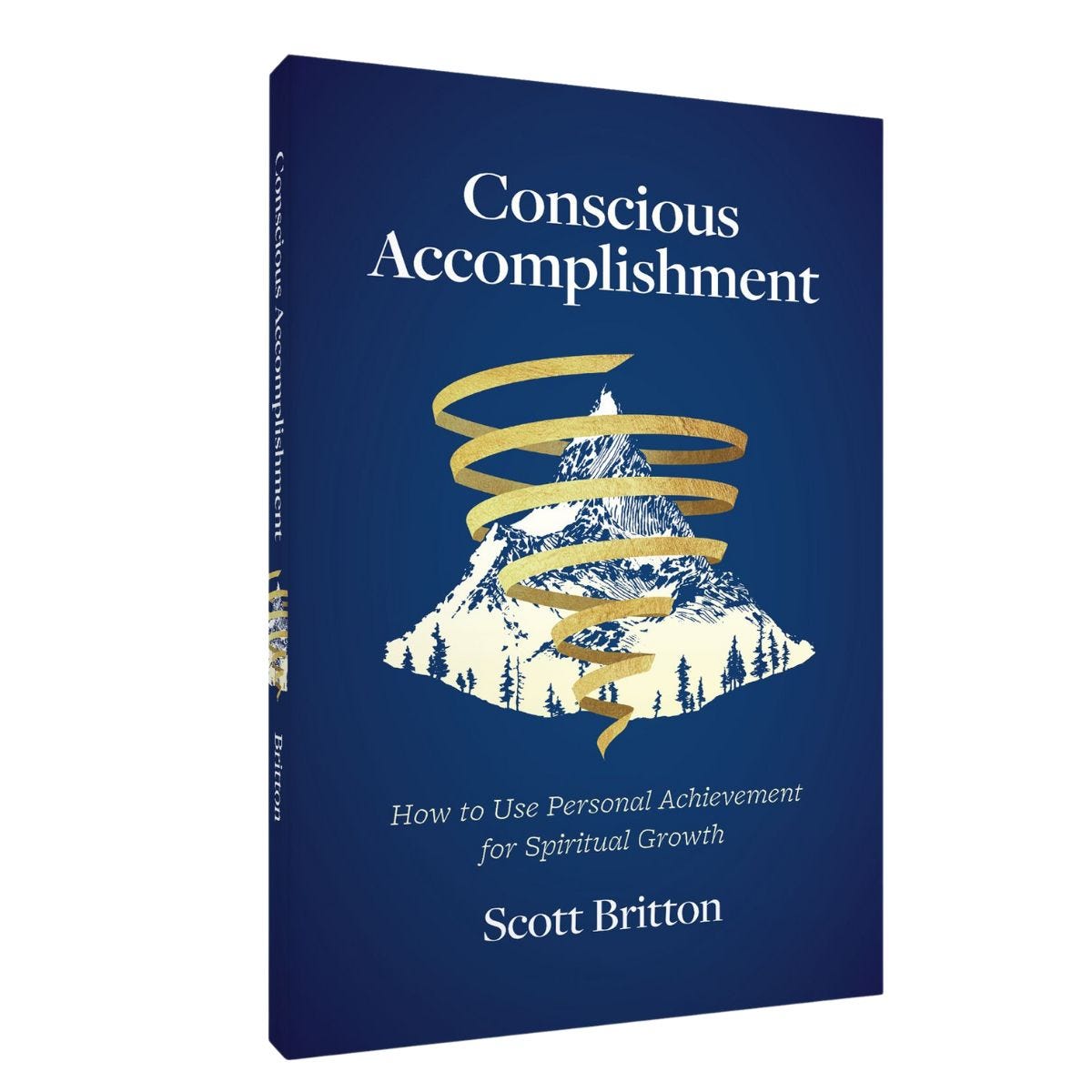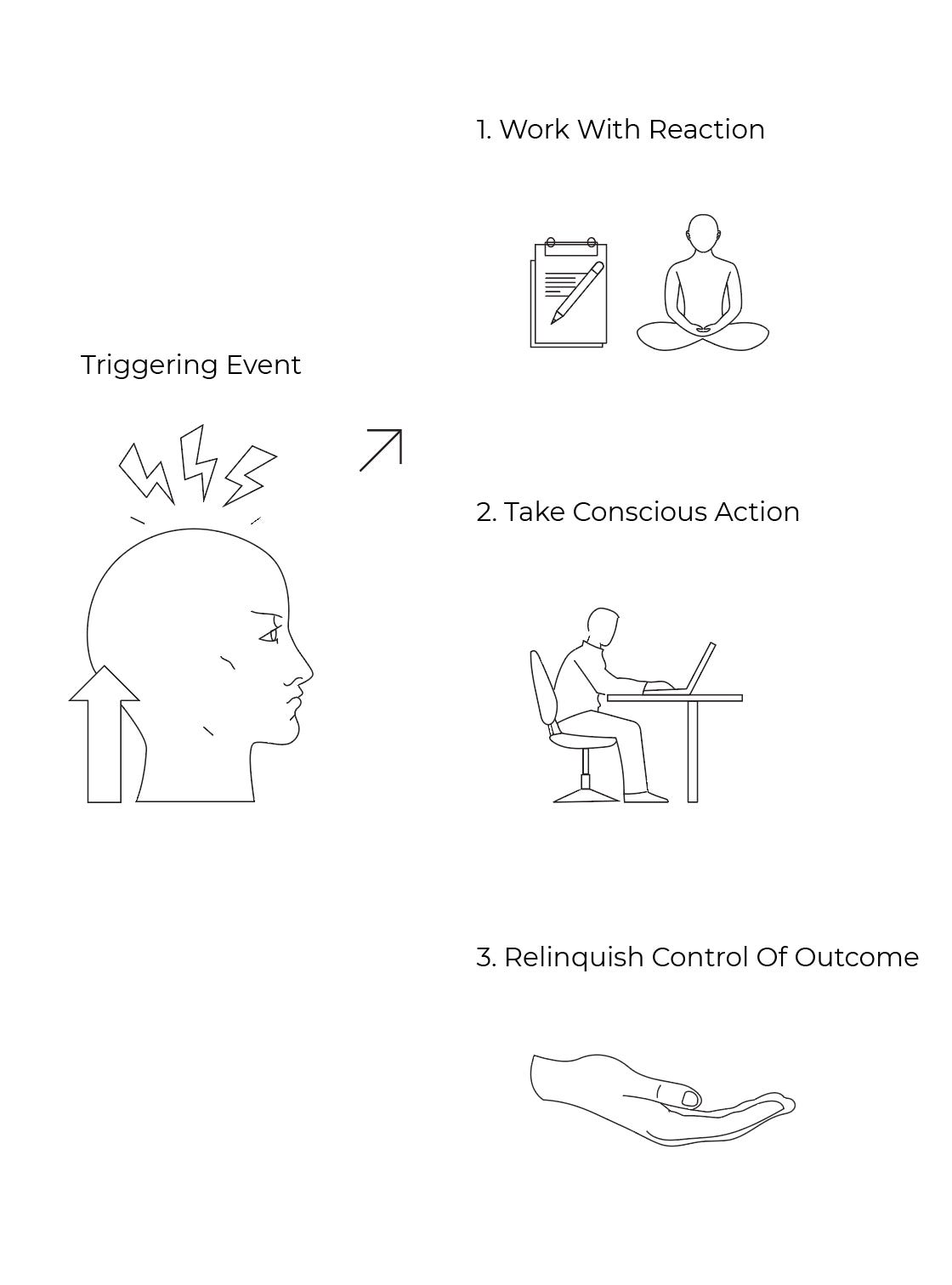Common Misconceptions About Acceptance And Surrender
This only took a year to figure out
I’m going to share a chapter from Conscious Accomplishment every week for the next few weeks on topics I think might be particularly helpful.
If you’ve ever read The Surrender Experiment and felt simultaneously inspired, yet confused on how to actually pull this off, this one’s for you!!!
Chapter 13 - Common Misconceptions About Acceptance And Surrender
In my first meeting with my teacher Carol, she told me, “when you learn to accept reality as it is, you will discover who you are.”
This theme of acceptance was like a thread woven through everything from my repatterning practice to many of the books I was reading. One of my favorite books that I came across during this time was The Surrender Experiment by Michael Singer. It’s an enchanting story about a meditator turned entrepreneur that, through surrendering to the flow of life, ends up starting a spiritual community and billion-dollar company. This unlikely paradox was catnip for a reformed overachiever like me, because it suggested a new way to create extraordinary outcomes in your life. But as I soon learned, the practical application of acceptance and surrender can be wildly disorienting.
I now view acceptance and surrender as cousins. Acceptance is about acknowledging the reality of a situation, while surrender is about relinquishing the need to control it. Usually acceptance paves the way for surrender. And together, they show us that peace arises not from control, but from releasing our resistance to how life unfolds.
As enchanting as acceptance and surrendering were to me, I was confused about how to practically apply them. Cultural connotations of the words “acceptance” and “surrender” made it seem like they required submission, passivity, and resignation. Was I supposed to abandon my personal will entirely in order to grow spiritually? Was I just supposed to say “yes” to everything? I felt paralyzed. On the one hand, I wanted to reclaim my zeal for creative action that seemed to wither as I redirected most of my focus to exploring my consciousness. On the other hand, I didn’t want to regress to my old patterns of trying to control everything. For so long, I had exerted my willpower to mold life to my desires. And now I was afraid that continuing to behave this way might sabotage my consciousness evolution.
This period of confusion coincided with the first time that I’d ever endured prolonged illness. For almost two years, I experienced chronic fatigue, protracted laryngitis, brain fog, digestive issues, and a host of small ailments that made it difficult to function. At one point, the laryngitis got so bad that I lost my ability to talk. I’d be on Zoom calls trying to sell our company, disguising the pain that came with every word I spoke. My condition made even the simplest tasks feel like an uphill battle, and over time, the spark to build and create quietly dimmed. On the rare occasion that I felt motivated to accomplish something, it seemed like my body wouldn’t let me.
My initial approach to getting better mirrored my typical patterns. I took the situation by the horns, going to every western doctor doctor that I thought might help me. I also went to many alternative health practitioners and healers. I probably saw over twenty people that I thought could help me during the first year, but no matter what I tried, nothing healed me.
All these misguided ideas about acceptance and surrender, left me wondering whether I would be ill forever. Did surrendering mean that I had to stop trying to get better? Maybe being a sick, unproductive person was just my fate. One day, I finally broke down and shared my despair and confusion with my teacher Carol.
“Your problem isn’t whatever is happening with your health, relationships, or your company,” she said. “Remember your problems are your reactions to them. All you’re being called to do is to accept your reaction to whatever is happening. This means facing and being with any discomfort or frustration that arises in the moment. Acceptance and surrender don’t mean resigning yourself to some fate, or that you shouldn’t try to improve your condition. Accepting your reaction happens in the present moment. It can be done in as little as thirty seconds, and then you can resume taking supportive actions.”
Carol’s insight highlights two common misconceptions around acceptance and surrender. The first is that they mean resignation. In this view, you think that accepting or surrendering to a circumstance means giving up and continuing to experience it. The second misconception is that they mean abandoning discernment and agency. Both perspectives miss that acceptance and surrender are about how you relate to the moment, not about giving up your ability to respond or create change. Acceptance, surrender, and taking action can exist in harmony, but the sequencing matters.
I began to decouple the processes of accepting any disturbing reactions, taking action, and surrendering my need to control the outcome. I applied this three-part process to situations big and small. A big example was how I related to my illness moving forward. Every time I felt anxious and frustrated about my health, I accepted how I felt in the moment, using repatterning. Eventually, I’d replace these feelings with a sense of trust that my body would heal. Following this first step, I’d then resume taking whatever actions that I thought would help me get better while doing my best to trust life’s unfolding.
Gradually, my condition started improving and the general malaise around taking action started to fade. I realized how I could work on accepting my response to life while moving towards my aspirations at the same time. This simplified things. All I needed to do was move towards my desires and work with whatever resistance came up along the way. My desires would evolve as my awareness expanded, but sticking to this principle as I spiraled upwards kept things straightforward.
A lot of people confuse acceptance and surrender for being passive or not trying to create change in the world. This is a misconception, and it can prevent you from being inspired to fully engage with life. You can accept whatever is unfolding in the moment and simultaneously feel inspired to make it better. Any notion that these can’t coexist just reflects polarized thinking. An effective way to hold both components is separating working with your reactivity from the process of taking conscious action. I always recommend working with your reactions as the first step, because it works at the root of your problems and helps you make choices from a place of greater clarity.
For anyone who seeks an integrated path to their spiritual growth, it’s imperative to understand how acceptance and taking action can exist harmoniously. Through my exploration of this balance, I realized that there are at least two types of actions. One seemed to emanate from and reinforce my patterns. The other led me to greater purpose, fulfillment, and potential.
Teachings
Acceptance means acknowledging the reality of a situation.
Surrender means relinquishing the need to control the outcome.
Acceptance or surrender don’t equate to resignation or the abandonment of agency.
Acceptance and surrender primarily deal with how you are relating to the present moment.
You can accept and surrender to your reactions and then take action to improve your circumstances.
You can accept reality as it is and still feel inspired to make it better.
I hope you enjoyed this chapter! You can keep reading or listening by checking out Conscious Accomplishment on Amazon.
Next week I’ll be sharing on The Mountain of Success vs. The Spiral of Fufillment.




Scott - reminds me of this quote from Victor Frankl: “Between stimulus and response there is a space. In that space is our power to choose our response. In our response lies our growth and our freedom.”
The distinction you've drawn between accepting your reaction versus accepting your fate is genuinely clarifying. That confusion about whether acceptance meant abandoning agency whilst chronically ill - the paralysis of not knowing whether to keep trying or 'surrender' to being unwell - captures something so many people get stuck in.